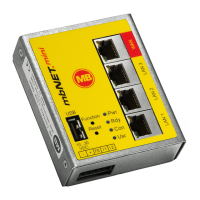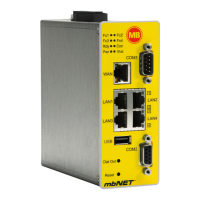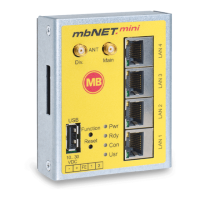Page 195 of 237
Version: 5.1.6 – June 4
th
, 2018
This setting must be the same on the peers.
UDP or TCP can be selected. The default setting is UDP. If the http
proxy is selected, TCP is automatically valid.
OpenVPN communication is conducted via the set ports. These
ports generally have the same settings. The default port is 1194.
Bind the local IP address and
port.
OpenVPN cannot change the ports dynamically while the connec-
tion is active.
Allow the peer to change the IP
address dynamically
This option allows the VPN peer to change its IP address while the
connection is active.
Compression method of OpenVPN.
A ping is sent to the VPN peer if the OpenVPN tunnel has not been
used for n seconds.
The tunnel is restarted if the VPN peer does not respond to the
ping within n seconds or no data packet is received.
The default MTU size is 1500 bytes.
Fragment the UDP packets in
... [bytes]
Packets bigger than n bytes will be fragmented.
Regenerate a new key after ...
[seconds]
A new key will be generated after n seconds. This is set to 3600
seconds by default.
Send more Information to the
System Protocol
This corresponds to the “verb 3” setting of OpenVPN. The default
is „off“.
Enable connection through a
HTTP proxy
You must check this box if you want to establish your connection
with the Internet via an http proxy server.
Enter the IP address or DNS name of the proxy server here.
Enter the port via which your proxy server accepts requests here
(e.g. 8080 or 3128).
If your proxy server requests authentication, enter a valid
username and the associated password.

